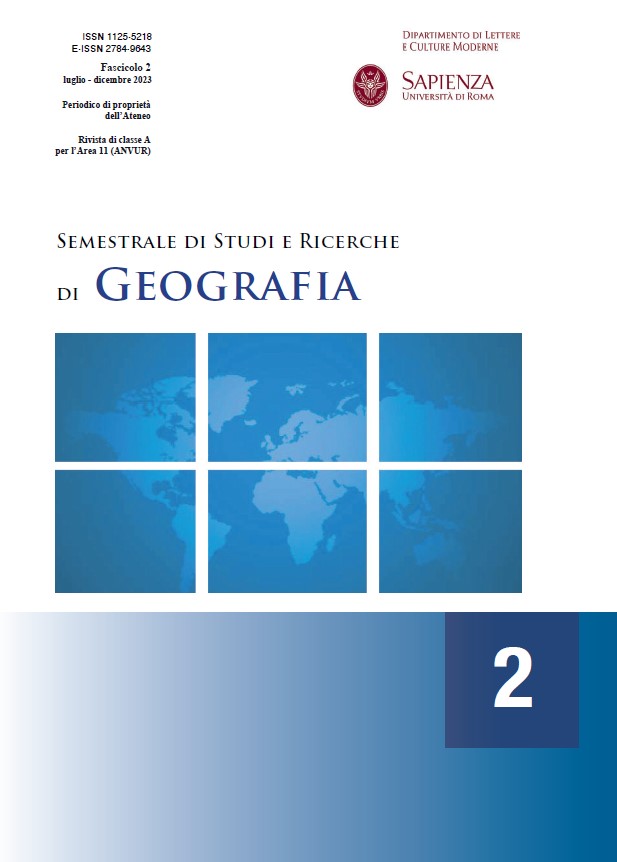Space Ordering Theory in Humanistic Geography: A New Reading of the Biblical Exodus Route and Har Karkom Archaeological Ruins (Negev Desert)
DOI:
https://doi.org/10.13133/2784-9643/18454Keywords:
Humanistic Geography, theory of spatial ordering, biblical Exodus route, Har KarkomAbstract
The paper proposes a new procedure based on the Space ordering theory in Humanistic Geography [H. Lefebvre (1991), E.W. Soja (1996)], for reading the Biblical Exodus route and Mount Sinai location.
The Sinai Desert is characterized by hard crossing and critical survival conditions where, nowadays, it is still possible to find archeological rests of nomadic settlements dating back to the Paleolithic Period until the Period of the Islamic conquest. The largest part of the settlements facing the locations of Har Karkom have been deeply studied by the team of prof. Emmanuel Anati during fourty years of activity and identified as one of the possible locations of Mount Sinai e.g. (Anati 2018). According to Humanistic Geography, the desertic landscape and the archeological ruins of the Sinai Peninsula can be studied and interpreted through the so called First Space Theory.
The Second Space aims to investigate the origin and classify the age and purpose of such rests and of the relative settlements which guarantee the survival to the populations and the flocks in tow during their seasonal herding migrations or during the frequent transfers between the two bordering lands of the Sinai Peninsula: Egypt and Canaan.
According to the historical reconstruction of the archeological ruins, Third Space can be considered as the space of the “cultural layering and of the individual and society memory foundation” (Lando and Voltolina 2005). By the way, this can be related to the composition of a “holy story” during the Hellenistic Period (Barbaglia 2017), the so called Biblical Exodus of elder populations from the delta of Nile to the land of Canaan.
After a brief introduction on the Biblical Exodus proposal by S. Barbaglia (2017), the paper investigates the Space Ordering Theory characteristics introduced by H. Lefebvre (1991) and E.W. Soja (1996) in Humanistic Geography. Finally, the applications of such theory for the reconstruction proposal of the Biblical Exodus route are analysed.
Downloads
Published
Issue
Section
License
Copyright (c) 2023 Semestrale di studi e ricerche di geografia

This work is licensed under a Creative Commons Attribution 4.0 International License.
Gli autori che pubblicano su questa rivista accettano le seguenti condizioni:- Gli autori mantengono i diritti sulla loro opera e cedono alla rivista il diritto di prima pubblicazione dell'opera, contemporaneamente licenziata sotto una Licenza Creative Commons - Attribuzione che permette ad altri di condividere l'opera indicando la paternità intellettuale e la prima pubblicazione su questa rivista.
- Gli autori possono aderire ad altri accordi di licenza non esclusiva per la distribuzione della versione dell'opera pubblicata (es. depositarla in un archivio istituzionale o pubblicarla in una monografia), a patto di indicare che la prima pubblicazione è avvenuta su questa rivista.
- Gli autori possono diffondere la loro opera online (es. in repository istituzionali o nel loro sito web) prima e durante il processo di submission, poiché può portare a scambi produttivi e aumentare le citazioni dell'opera pubblicata (Vedi The Effect of Open Access).


